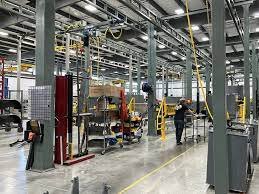Last Updated on July 21, 2023 by
In today’s blog, we’ll discuss the advantages and disadvantages of dropshipping vs. in-house production for your t-shirt business.
Table of Contents
What is drop-shipping, and how does it work?
So, what is dropshipping exactly, and how does it work? Drop-shipping is a procedure in which you use a third-party fulfilment system to mail your t-shirts to your clients. It appears to be straightforward enough, which is why many people who are just getting started in the custom garment company and don’t have a lot of money will take this approach.
Between your customers and the fulfilment system, you are essentially the go-between. You’re in charge of the website’s front end and getting the merchandise onto it.
When you want to get started with drop-shipping, there are a few things you need to do first:
Once you’ve added these designs to your store, clients will be able to purchase them.
The fulfilment system receives the design specifications and prints, packs, and ships your products to the consumer. Now, let’s go over some pros and cons.
Pros
Don’t take any risks and don’t invest any money upfront
To print or embroider on the item, you don’t need to spend any money on inventory, equipment, or materials. You didn’t have to spend anything upfront; all you had to do was market your company to receive orders and then profit from the process. Furthermore, you only pay a portion of the profit to the fulfilment system when an order is placed and delivered
Drop-Shipping Is A Print-On-Demand Service
One of the best aspects of dropshipping is that once an order is placed, the fulfilment system will begin processing it for production and shipment automatically. You don’t have to worry about when you’ll print the design or where it’ll be transported because you’re the middleman.
You won’t have to worry about making the item or getting it delivered to the consumer. They even include your business logo on the packaging, giving the impression that you were the one who fulfilled the order when, in fact, it was handled by a third party! It’s done for you automatically by the fulfilment system.
You are not required to invest in inventory
The fulfilment system keeps inventory on hand and handles order fulfilment for you. All you have to do now is put the blank gear that is available through the fulfilment system to your website, along with your design. In terms of blank clothes, you don’t need to keep a lot of inventory on hand.
Cons
Never get your hands on the entire profit potential
If you’re looking to enhance your profit margins, this might not be the ideal option for you. The fulfilment cost is most likely a significant portion of the overall order’s profit margin. Because the fulfilment system is responsible for delivering and creating all of your orders, they must be compensated for their efforts.
You have no quality control
You have no control over how the product will look when it is shipped out if you allow someone else to prepare and design it for you. When you utilise a fulfilling partner, you forfeit control. You won’t be able to check that the product looks excellent and meets your brand’s requirements before it’s delivered out.
Keeping production in-house
You’ll have complete control over the fulfilment of orders, the creation of high-quality designs, and the development of a strong, authentic relationship with your clients. Buying the necessary equipment/materials, printing, packing and shipping the products yourself is all part of the DIY process.
Pros
You keep 100% of the profit from your orders
After you’ve paid off your equipment, your profits will skyrocket. After you’ve paid off your equipment, your profits will skyrocket. This allows you to grow your firm and enhance your profit potential dramatically. Doing it in-house allows you to make an endless amount of money.
You have complete control over the product quality
Quality control is essential for developing your brand image and shaping and tailoring your consumers’ experiences. When hiring a third party, there are some external aspects to consider. With drop-shipping, you rely on the fulfilment system to provide a product that is worthy of the price and brand you’ve built.
Cons
You’ll need to know a lot about how to design and print these items
You must evaluate whether it is worth your time to master the craft in order to reap the benefits of the economic potential down the future. While anyone may start a t-shirt business, those that put in the effort to learn the craft and do it properly day in and day out get the greatest rewards.
Profit from products to the fullest extent possible, but pay for it in other ways
You’ve invested a significant sum of money in the hopes of at least breaking even and recouping your investment. Having your own t-shirt printing business necessitates a much larger financial investment than if you were drop-shipping your orders.
Final Thoughts
At the end of the day, think about what’s best for you and your company. Both drop-shipping and establishing your own custom embroidery digitizing business have advantages and disadvantages. It’s entirely up to you whether you want to drop-ship and have more time to market your business or perform the labour yourself.
Read More: 8 Factors to Consider When Choosing Modern Luxury Furniture




















